
|

|
|
Home Site Search Contact Us Subscribe
|
|
|
Exhibition Review: "Yes is More": BIG at DAC, Copenhagen Though the firm's housing projects are amazing and their enthusiasm is great, the comic book graphics are a bit much - it's hard not to roll your eyes, but definitely worth the roll. By Terri Peters February 27, 2009 Like stepping into Koolhaas’s 2004 comic book Content, the work on show at “Yes is More” is certainly more Simpsons than Semper, but it’s difficult to deny the optimism and vibrancy that characterizes the work of Danish design office BIG.
Of the hundreds of architects crammed into the Danish Architecture Centre in Copenhagen February 20, many have just lost their jobs as nearly every large office in the city lays off designers and small offices struggle to stay afloat. With global news presenting all too serious moments for architects both in Denmark and abroad, it’s refreshing to see architecture presented in such a playful light.
BIG Architects is led by Bjarke Ingels Group (hence BIG), formerly a partner of PLOT Architects, and before that a project architect at Office for Metropolitan Architecture/OMA. His Copenhagen-based office has about 80 staff and a penchant for brightly colored physical models, a brilliant website, and imaginative computer visualizations. At the “Yes Is More” exhibition, however, the first thing visitors notice is that Ingles himself puts a lot of confidence on show – to the point of juxtaposing an image of Obama saying “Yes we can” with an image of himself and his own catchphrase. The comic strip graphic shows quotes and photos of Mies van der Rohe, Le Corbusier, Charles Darwin, and Barack Obama, and among them Bjarke Ingles’s cheeky face. Many will find it amusing and energetic that his photograph appears all over the exhibition, panel after panel, with a comic book caption explaining to the viewer how things should be, the gospel according to BIG. One wall even has print-outs of mentions of BIG in the press.
The layout and graphics of the show are very much the message – even without understanding Danish it is evident that BIG’s work promises a new, youthful, and fun approach to architecture. Yet even if BIG had decided not to communicate its designs with so much personal branding, the work would still stand out from its contemporaries on its own design merit. The fact that many of the fictional-looking designs have been built and are successful buildings, such as the VM Housing in Copenhagen (stunning design, quirky pointy balconies, and small but functional flats), and the Mountain housing project (which boasts a lovely stepped green roof providing private gardens for residents above a multi-story car park), here risks being overshadowed by the over-the-top graphics.
At “Yes is More,” projects at all scales compete for wall and floor space. There are housing towers built in LEGO, renderings of a cityscape that look like a rollercoaster ride, proposals for a new zero-carbon city in Azerbaijan and a harbor-front master plan with housing that spells out the name VEJLE in building-sized letters, among other projects. The sheer amount of projects on show and the crowded opening night party made it difficult for visitors to glean much information beyond the graphics, but this is certainly an exhibition that deserves to be revisited and contemplated carefully on a quiet afternoon.
Whatever your take on their approach to communicating their brave new world for architecture, what they have built is very good. Behind the bold strokes and high energy graphics there is real architecture here: complex spatial relationships, human scale (in some cases at least), and a focus on quality and sustainable urban design. BIG goes well beyond the conventional Modernism that Denmark is known for. But this exhibition has international relevance as well. In this changing economy there is an opportunity for rethinking old habits and welcoming new and international approaches to urban design and architecture. For example, housing designers in the U.K. and U.S. could learn a lot from Danish housing design, including the work of BIG.
BIG is big in Denmark, and new Danish design has arrived.
“Yes is More, Close Up: Bjarke Ingels Group” is at the Danish Architecture Centre until May 31, 2009.
Terri Peters is a writer and designer based in London. She writes about art and architecture for magazines such as Frame, Azure, Mark, Clear, and The Architect’s Journal.
Also by Terri Peters:
Field Notes from the
11th Venice Architecture Biennale - Part 1
Field Notes from the
11th Venice Architecture Biennale - Part 2
Architecture
Supermodels: Report from SmartGeometry Conference
Exhibition Review:
"The 60s: Montréal Thinks Big" at the Canadian Centre for
Architecture
Exhibition Review:
"RED + WHITE: Canadians in Design" at Canada House, Trafalgar Square,
London
|
(click on pictures to enlarge) 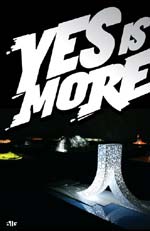 Danish Architecture Centre
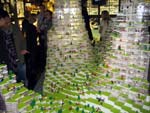 Terri Peters LEGO housing 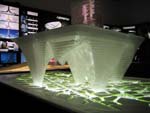 Terri Peters Hotel complex in Dubai 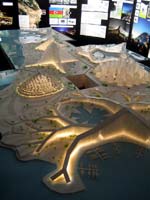 Terri Peters Zira Island  Terri Peters Opening night 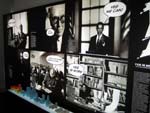 Terri Peters
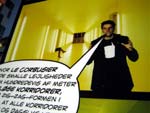 Terri Peters
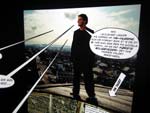 Terri Peters
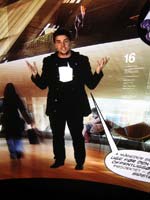 Terri Peters
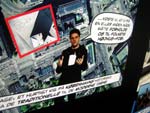 Terri Peters
|
© 2009 ArchNewsNow.com